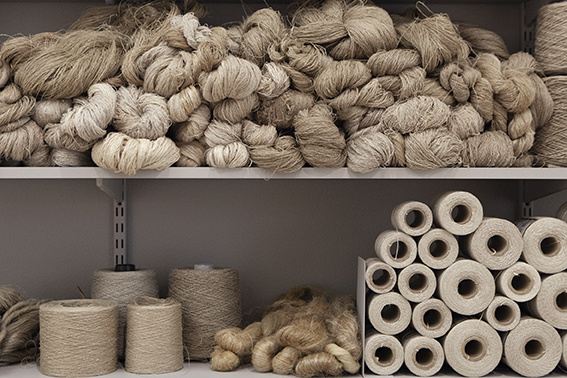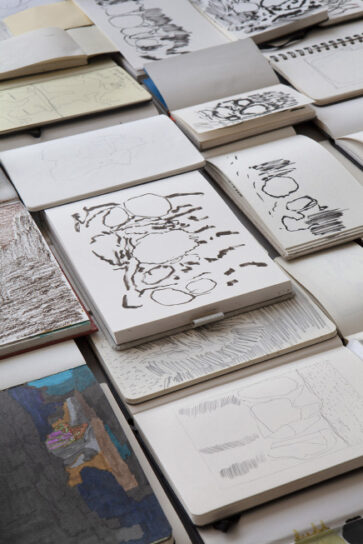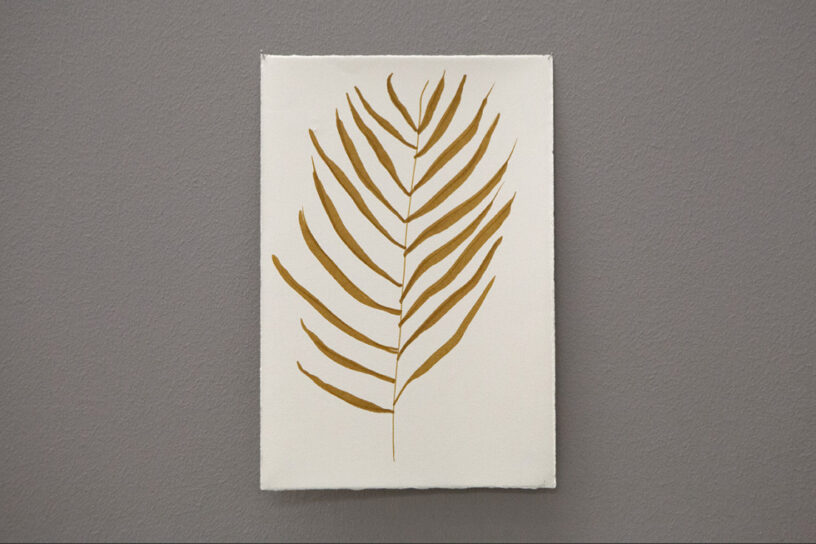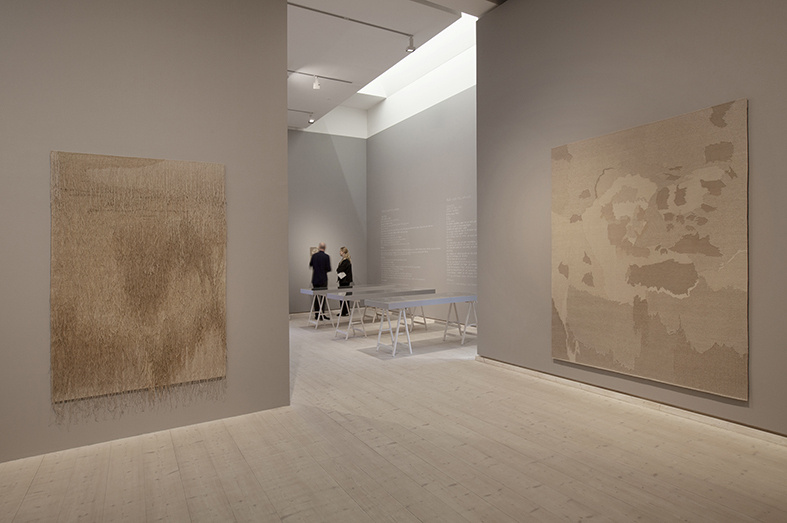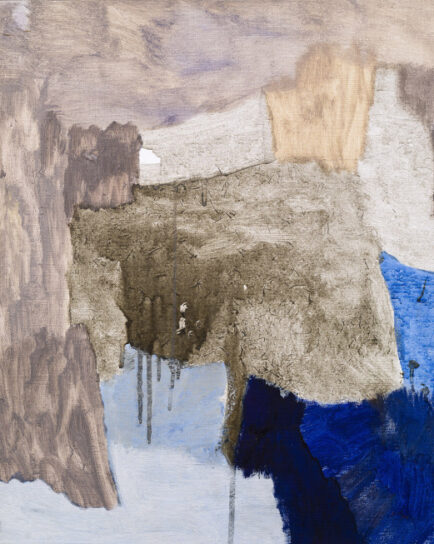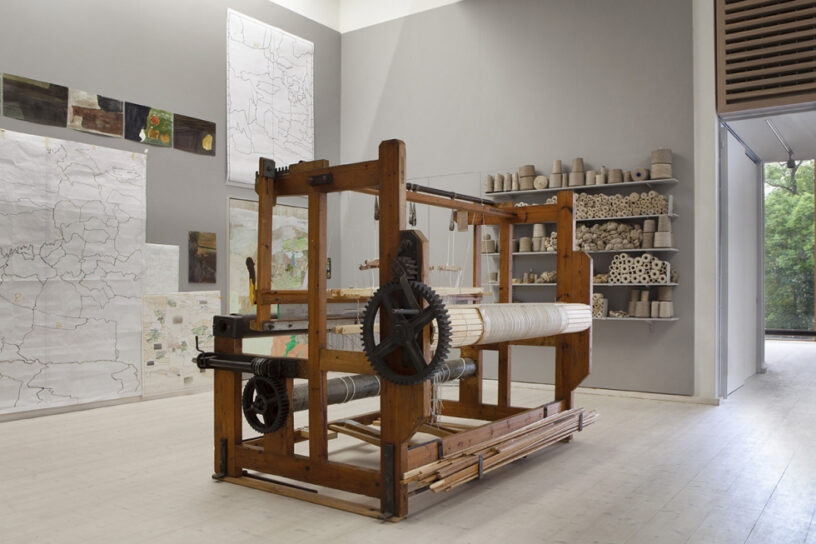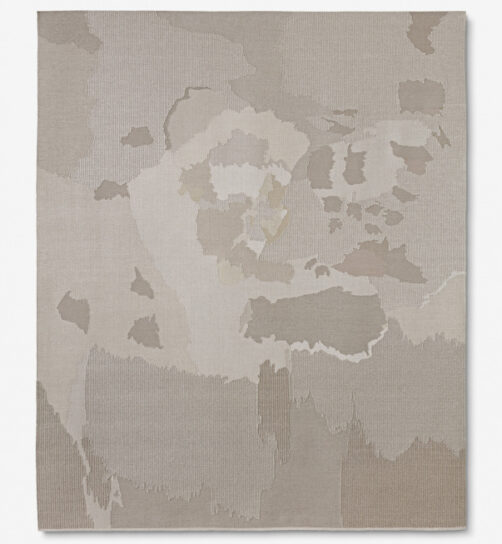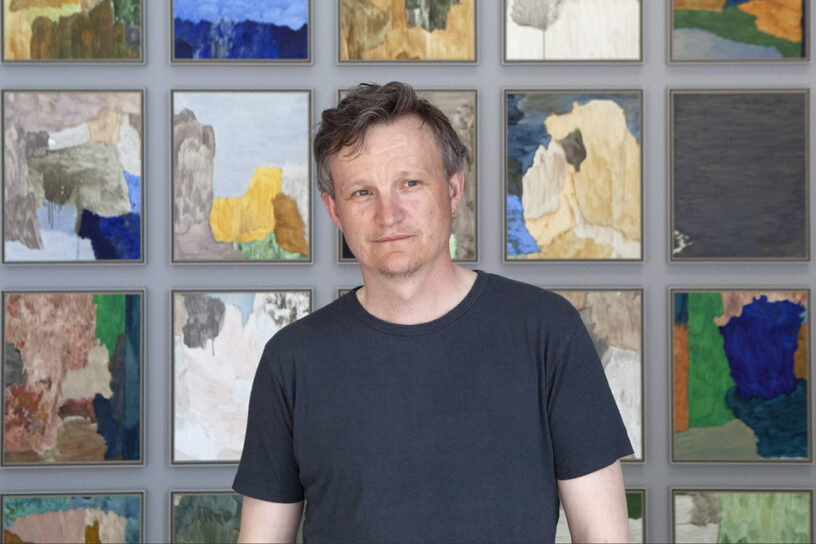- Open today 11–17
- Open today 11–17
Andreas Eriksson – Weavings, sketches
“When the art world hopes for another large-scale test of strength in oil paint, he turns his attention to thin, gray-beige linen threads. That is artistic integrity.”
/ Linda Fagerström, Sydsvenskan 5 augusti 2021.
“With an astonishing sense of textile design, they [the art weavers] have translated and hand-woven after Eriksson’s sketches, which in turn have been inspired by previous paintings and sketches.”
/ Gabriela Lopez, Konsten.net 4 augusti 2021.
“It is an examination of structures, an extreme extension of Eriksson’s fascination with the canvas, which has resulted in something new and magnificent.”
/ Christine Antaya, Kunstkritikk 16 june 2021.“All in all, worth seeing, educational and incredibly beautiful!”
/ Britta Montigny, Norra Skåne 17 june 2021.
The exhibition sheds light on the process surrounding Andreas Eriksson’s textile works. The focus is on ten monumental tapestries in unbleached linen created by Eriksson in close cooperation with several artisan weavers in Lidköping and Berlin. Watercolours, sketches and weaving samples provide insight into the artistic process and the time-consuming work. Sketches for a new textile project for Lund Cathedral are also shown here. A series of paintings offers further entry points into Eriksson’s creative process.
Eriksson works simultaneously with various artistic expressions – painting, sculpture, photography, graphics, books and textiles – often with the nature as an inspiration. The origin of the woven images is Eriksson’s interest in materials and texture. Some years ago, the canvas in linen became increasingly important for its own sake. Gradually, the linen cloth was transformed into woven artworks in linen. Eriksson’s paintings form the basis for the compositions, which can bring to mind the bark of a tree or maps of unknown landscapes. The works have titles that refer to the place of their origin. Weissensee, that occurs in the titles, is a district in Berlin where Eriksson has a studio.
Eriksson and his staff have for several years collected older unbleached and hand-spun linen yarn from all over Sweden. Eriksson has chosen to keep the yarn’s natural hues, which vary depending on the growing conditions and processing. With different weaving techniques and yarns in varying structure and nuances, surface and depth are created in the woven image. The technique of refining flax into textiles and the art of weaving is ancient. In Eriksson’s tapestries, contemporary art, traditional crafts and cultural history are united in a cross-border encounter.
The forty-five painted fragments, Cutouts, of the new large work Texture Mapping 2019–2020 can be seen as memories of previous paintings. Like the tapestries, they contain traces of previous processes, but also opportunities for new works.
The exhibition is presented with generous loans from the Stephen Friedman Gallery, London and Galerie neugerriemschneider, Berlin.
You can find out more about the artist’s work process in two recently published books: Andreas Eriksson. Weavings(Infinite Grayscale, 2020) and Andreas Eriksson. Cutouts (Hatje Cantz Verlag, 2021).
Artisan weavers: Maria Andersson, Katja Beckman, Sara Eriksson, Siri Pettersson, Ben Smith
Andreas Eriksson (born 1975) studied from 1993 to 1998 at the Royal Institute of Art in Stockholm. In 2007, he was awarded the Baloise Art Prize, Art Statements, Basel, Switzerland. Eriksson represented Sweden at the Venice Biennale in 2011. He is represented at the Centre Pompidou in Paris, MUMOK in Vienna, Gothenburg Museum of Art, Moderna Museet in Stockholm, Nordic Watercolour Museum in Skärhamn, Louisiana Museum of Modern Art in Humlebæk, National Museum in Oslo, Public Art Agency Sweden and others. Eriksson became a member of the Royal Academy of Fine Arts in 2014. He lives and works in Medelplana and Lidköping.
Eriksson has produced several works of public art, including Weissensee No. 4 for Uppsala University Hospital, Roundabout for Södersjukhuset in Stockholm, Baum 1 for the Solna Main Library, Roundabout the Pipeline Tree for AstraZeneca (now Medicon Village) in Lund and Stenbrottet for Karolinska University Hospital in Solna.

